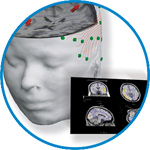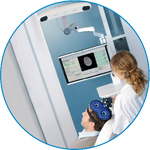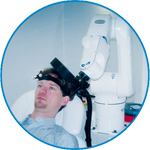- Home
- About ANT
-
Products

asa
asa is a highly flexible EEG/ERP and MEG analysis package with a variety of source reconstruction, signal analysis and MRI processing features.
.jpg)
eego mylab
The new frontier in multimodal brain research. With up to 16 kHz sampling rate, 256 EEG channels and unique software features, eego mylab gives you an unprecedented in-depth understanding of the human brain.

eego sports
eego sports offers complete freedom to collect high-density EEG data, bipolar EMG signals, and a variety of physiological sensor data, wherever and whenever required, with publish quality data in less than 15 minutes!

waveguard net
The waveguard net sets a new standard for research applications requiring high-density EEG data acquisition with quick preparation time, high flexibility, and subject comfort.

visor2
Our new and upgraded visor2 solutions integrate all the latest technologies for navigated rTMS, dual-coil navigation support, EEG-TMS recordings and pre-surgical evaluation for the highest quality in research and clinical procedures.

powerMAG ANT
The PowerMAG ANT 100 rTMS stimulator is designed for the specific needs of high-end TMS applications. Powerful high-frequency TMS as well as high precise single pulse and repetitive pulse protocols are combined in one single device.

xensor
xensor offers the solution for digitization of 3D electrode positions. xensor takes care of the whole procedure; it records, visualizes and stores positions acquired with a dedicated digitizer.

waveguard original
waveguard original is the cap solution for EEG measurements compatible with fMRI, MEG and TMS system. Use of active shielding guarantees performance in even the most demanding environments.

waveguard connect
waveguard connect EEG caps are a perfect match for hospitals and institutes aiming at reliable EEG, maximum uptime and great patient comfort! For optimal signal quality, the electrodes are made of pure, solid tin.

waveguard touch
waveguard touch is a dry electrode EEG cap. The unique Ag/AgCl coated soft polymer electrodes provide stable, research-grade EEG signals while maintaining subject comfort. The combination of these innovative dry electrodes and the industry-leading waveguard cap makes waveguard touch the best solution for dry EEG.

smartmove
smartmove allows planning of a complete TMS session ahead by defining stimulation sites based on anatomical MRI information and functional information like fMRI, PET or EEG/MEG.
Stay - References
- Support
- Events
- News
- Contact Us
You are here
Functional Bimodality in the Brain Networks of Preterm and Term Human Newborns
Functional Bimodality in the Brain Networks of Preterm and Term Human Newborns
The spontaneous brain activity exhibits long-range spatial correlations detected using functional magnetic resonance imaging (fMRI) signals in newborns when (1) long neuronal pathways are still developing, and (2) the electrical brain activity consists of developmentally unique, intermittent events believed to guide activity-dependent brain wiring. We studied this spontaneous electrical brain activity using multichannel electroencephalography (EEG) of premature and fullterm babies during sleep to assess the development of spatial integration during last months of gestation. Correlations of frequency-specific amplitudes were found to follow a robust bimodality: During low amplitudes (low mode), brain activity exhibited very weak spatial correlations. In contrast, the developmentally essential high-amplitude events (high mode) showed strong spatial correlations. There were no clear spatial patterns in the early preterm, but clear frontal and parieto-occipital modules at term age. A significant fronto-occipital gradient was also seen in the development of the graph measure clustering coefficient. Strikingly, no bimodality was found in the fMRI recordings of the fullterm babies, suggesting that early EEG activity and fMRI signal reflect different mechanisms of spatial coordination. The results are compatible with the idea that early developing human brain exhibits intermittent long-range spatial connections that likely provide the endogenous guidance for early activity-dependent development of brain networks.

 Read more
Read more.jpg)




